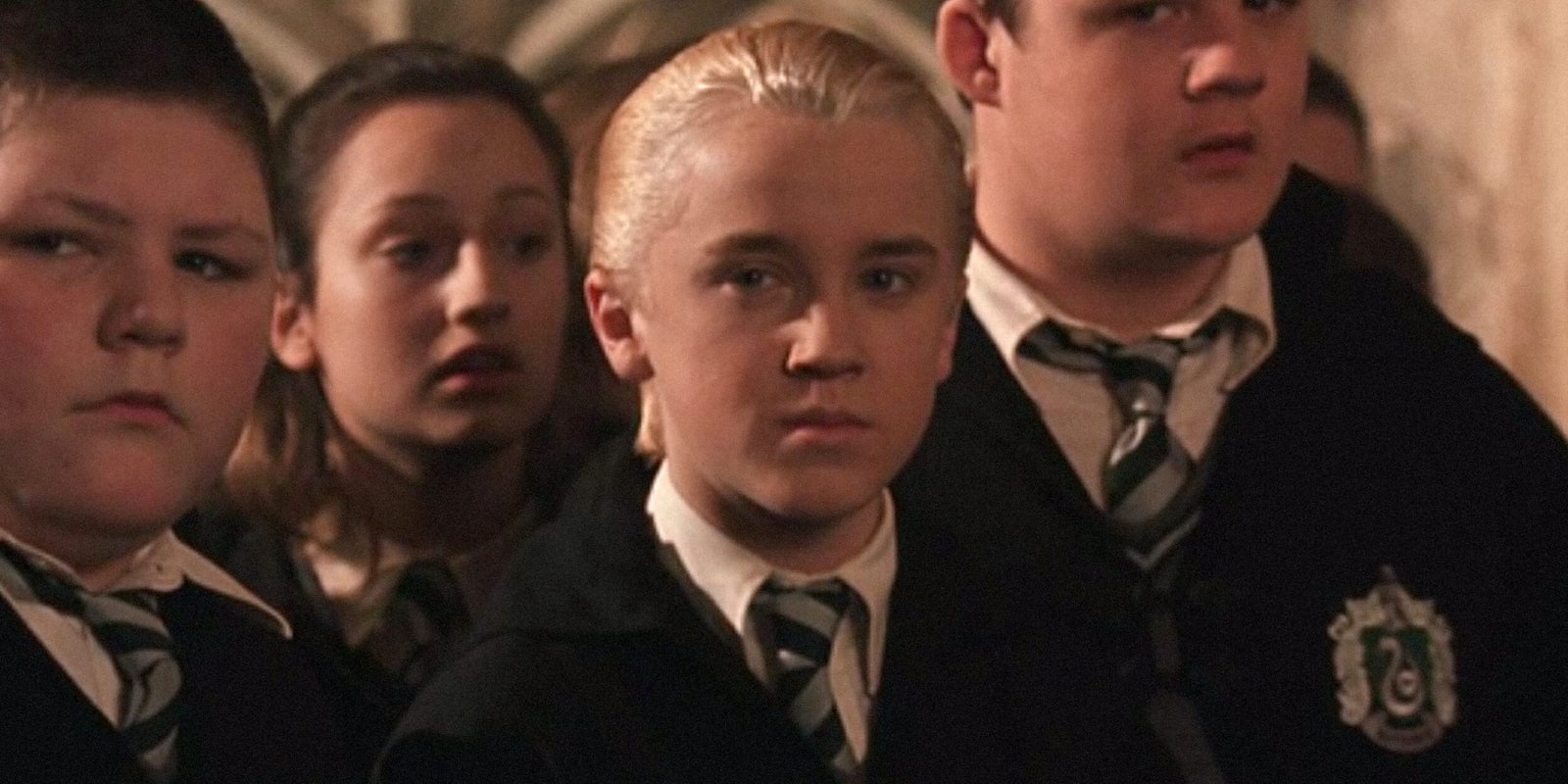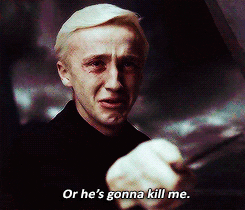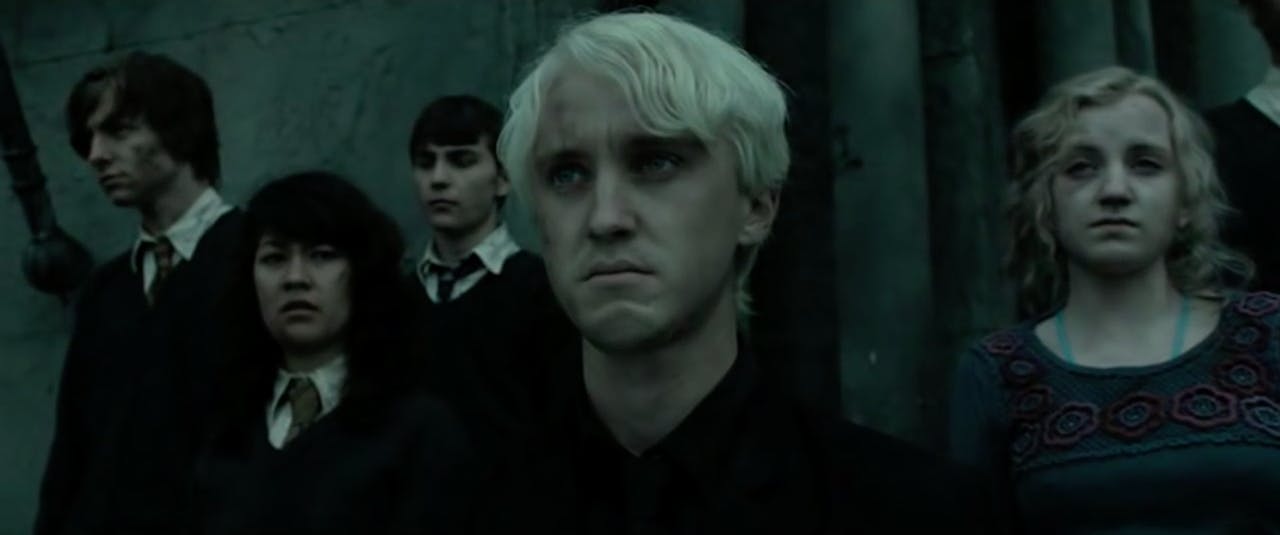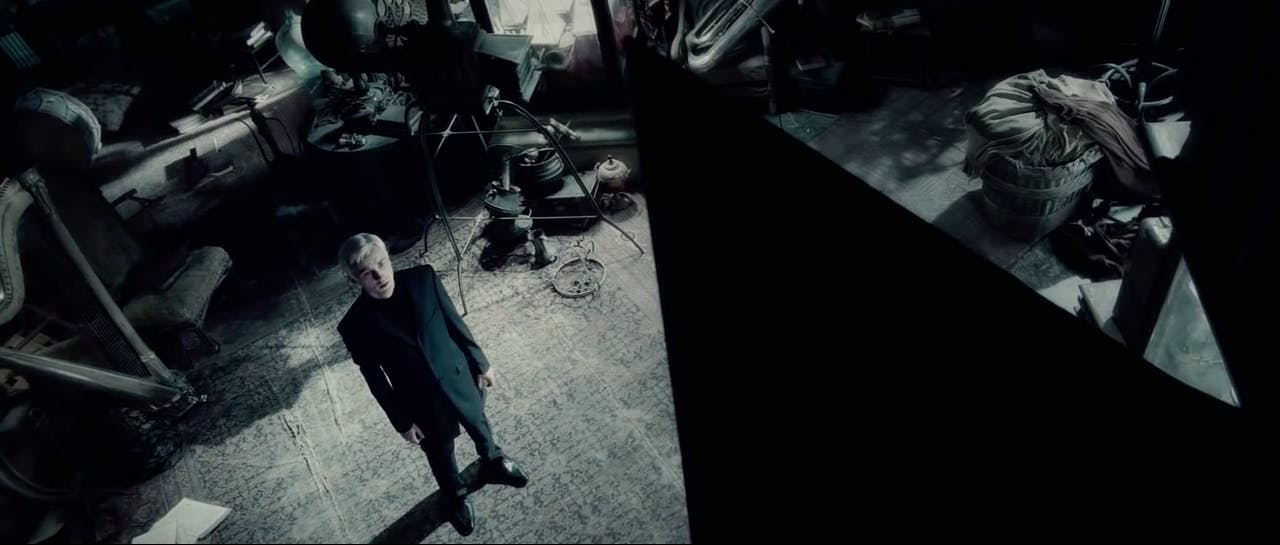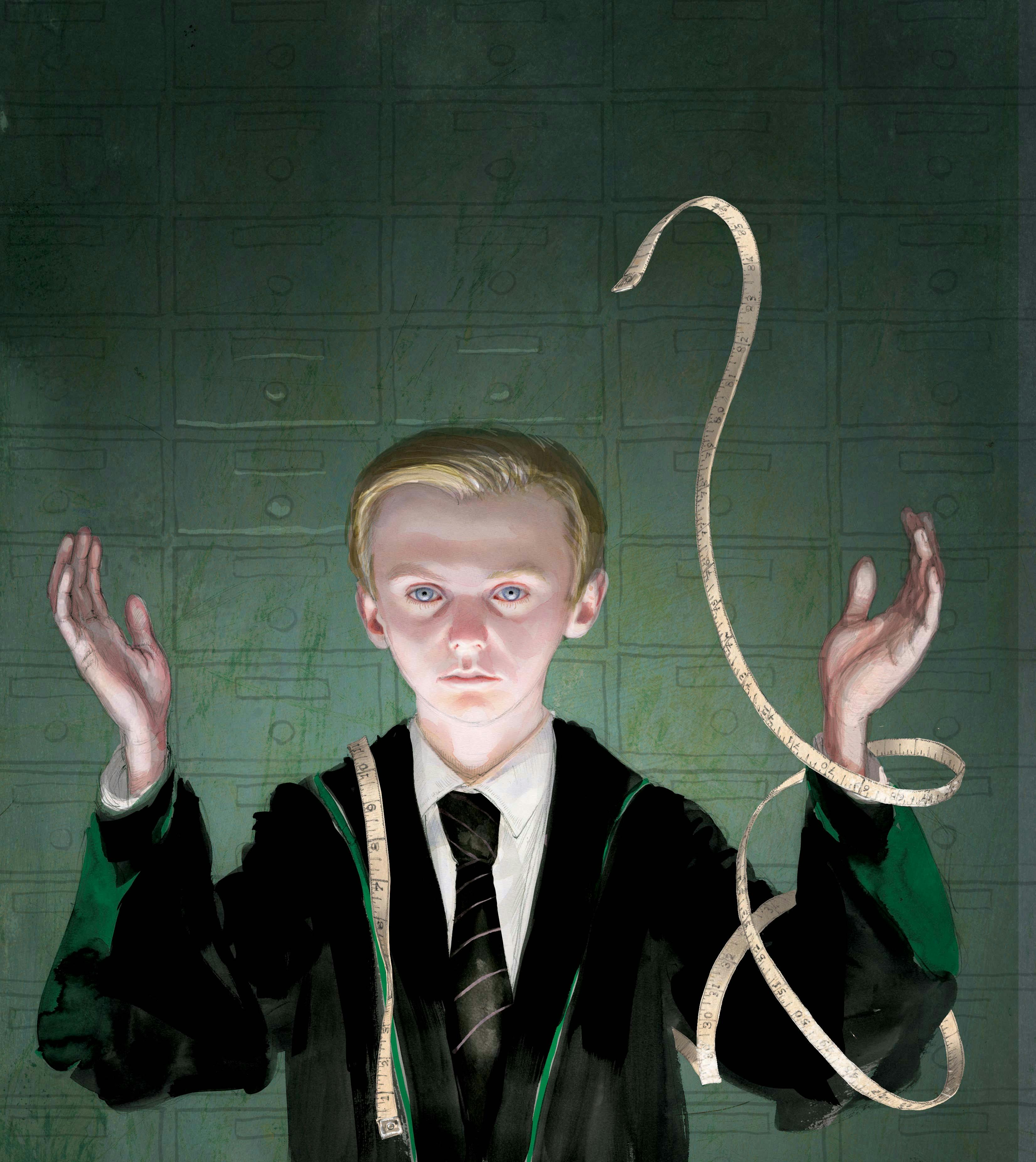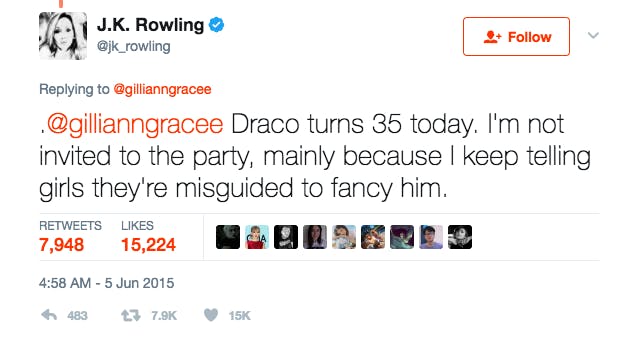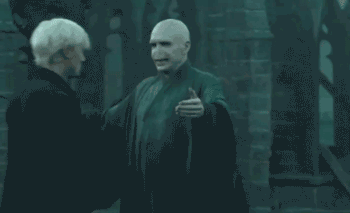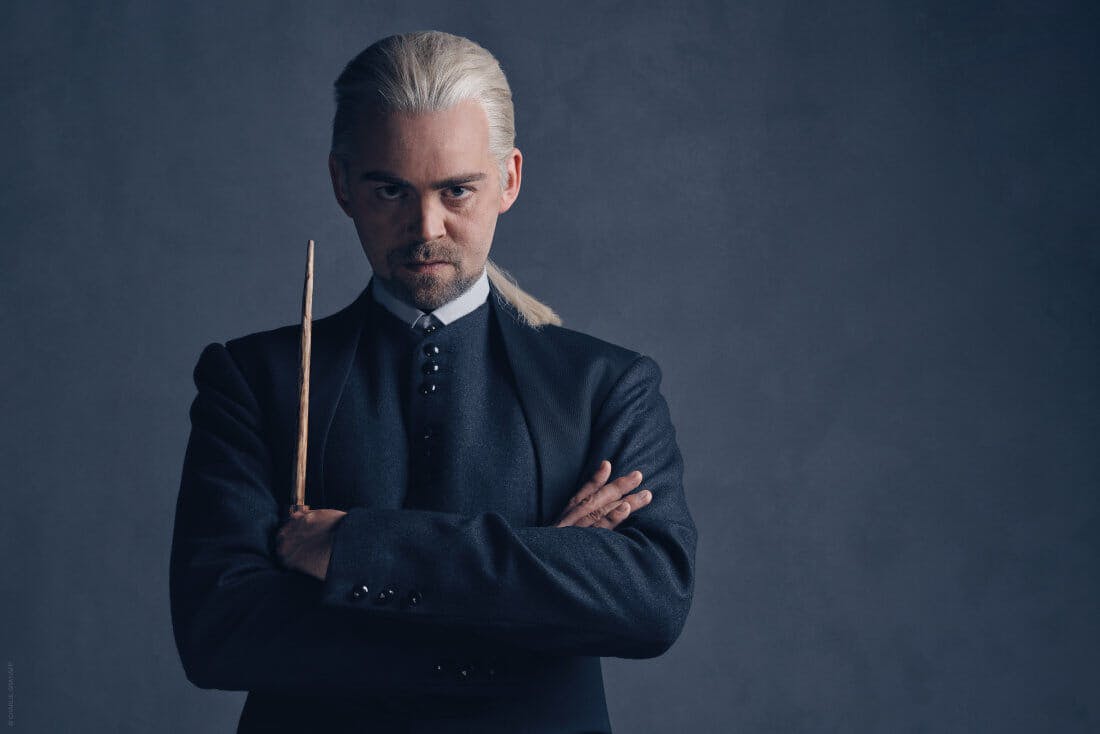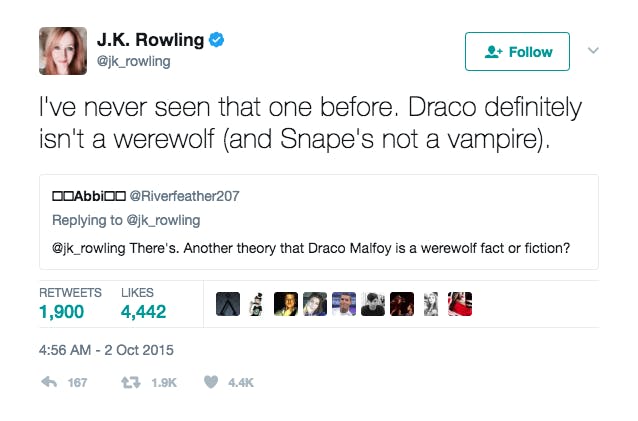Of all of Harry Potter’s classmates at Hogwarts, none drew more scorn than Draco Malfoy.
Harry and Draco’s rivalry began on their first day of Hogwarts and didn’t let up during their time at school. They spent much of their time openly showing their disdain for one another with insults, and jinxes, and their friends were often caught up in the confrontations.
It played out like any boyhood rivalry until Half-Blood Prince. Voldemort tasked teenage Draco with the horrific task of killing Albus Dumbledore, and while he didn’t kill the headmaster in the end, the experience transformed Draco into a much more complex character. He was set up to fail, but Severus Snape covered his tracks, and Deathly Hallows showed his reluctance to blindly follow same pure-blood principles his parents had instilled in him.
What we end up getting in the Deathly Hallows epilogue and eventually Harry Potter and the Cursed Child is a more nuanced Draco than we initially encountered.
For all of his qualities and faults, Draco is much more interesting than some give him credit for. (And yes, that includes a bit of prejudice from Harry himself.)
15 dark facts about Draco Malfoy
1) The real reason Draco Malfoy tried to befriend Harry
There was a time, albeit a short one, when Draco very much wanted Harry to be his friend.
He already knew several children of former Death Eaters before he stepped onto the Hogwarts Express, so he wasn’t necessarily in need or want of friends. It was, according to J.K. Rowling, because he wanted to find out whether Harry was secretly a dark wizard that Voldemort’s surviving supporters could rally behind. It had long been one of the more persistent theories surrounding Harry, unbeknownst to him, as to how he survived Voldemort’s Killing Curse as a baby. It was also a theory that Draco’s father Lucius supported.
Unfortunately for Draco, Harry wasn’t having it. Harry recognized Draco as the boy from Madam Malkin who insulted Hagrid and voiced that Muggle-borns shouldn’t attend Hogwarts. By then Harry had already made a friend in Ron, who Draco insulted for his appearance and family’s lack of wealth. After being raised by the uppity Dursleys, Harry recoiled at Draco’s snobbery.
It didn’t take Draco long to abandon the belief that Harry could possibly be a dark wizard. The rest, as they say, was history.
2) The Malfoys’ “slippery” family history goes back generations
It didn’t take long for Harry to notice the extent of the Malfoy family’s influence and how Draco (and his family) were able to weasel their way out of almost any situation. Draco often walked around Hogwarts like he owned the place—and in a way, he thought he did. His family was one of the richest in the country and had resided in England since the time of William the Conqueror.
The Malfoys long had a hand in power, but they never held office themselves, preferring to spin their influence behind the scenes. However, they still left their mark on magical and Muggle history, particularly one Malfoy, whose torture of some Muggle tenants resembled the Black Death.
While Draco’s reach never really went beyond the walls of Hogwarts, his father Lucius had the ear of Cornelius Fudge, the Minister of Magic for the first five Harry Potter books. Lucius famously managed to avoid Azkaban twice: he claimed he was under control of the Imperius Curse after Voldemort fell the first time, and he provided the Ministry of Magic evidence to help capture Death Eaters who were hiding after Voldemort’s death.
3) The Malfoys’ anti-Muggle sentiments were (relatively) recent
Before the Statute of Secrecy was implemented in 1692, the Malfoys sometimes interacted with Muggles whenever it benefited them. (They respected wealthier Muggles over the poor.) The Malfoys expanded their lands in Wiltshire, became so rich that they never really needed to work for centuries, and they added Muggle paintings and items to their collections. Even hundreds of years later, Draco didn’t have to worry about finding a job after leaving Hogwarts. (Family members probably even married Muggles in centuries past, although the Malfoys of today would certainly deny it.)
While they initially resisted the Statute of Secrecy—moreso for what they would lose from it than for any noble reason—the Malfoys lied about ever being against it. Their anti-Muggle sentiment grew over time to the point where no future Malfoy ever married a Muggle or Muggle-born (although they did marry half-bloods, unlike some other pure-blood families). In the 1930s they were included on the “Sacred Twenty-Eight,” an anonymously published list of pure-blood families, and the Malfoys embraced such magical bigotry as a means to gain power.
It persisted down the line until an adult Draco and his wife, Astoria Greengrass (who surname was also on the Sacred Twenty-Eight list), resolved to raise their son, Scorpius, to be much more tolerant of Muggles and Muggle-borns than they were ever raised to be.
4) Why Draco Malfoy’s creator isn’t comfortable with his popularity
Pick just about any Harry Potter character with a role to play in the story—with maybe a few exceptions like Dolores Umbridge—and you’ll find readers and movie viewers who are intrigued, admire, or even root for them. So it’s not too surprising some fans like Draco.
He’s paired with Harry in one of fandom’s most popular ships, but some also like him as a character. That’s not to say they endorse or support every decision he makes; he’s prejudiced, was raised to believe he was better than everyone else, snotty, and kind of a coward by Deathly Hallows. But that doesn’t take away from the fact that he’s a fascinating character—and maybe even one readers may pity.
READ MORE:
- 9 things you don’t know about Severus Snape
- This couple had a Harry Potter-themed wedding, and it was breathtaking
- Everything we know about Fantastic Beasts 2
In recent years, Rowling has taken issue with how some fans (particularly young girls) have admired Draco, and she addressed it when she debuted Draco’s biography on Pottermore in 2014. She put part of the logic behind it on actor Tom Felton, who played Draco through all eight films and is basically the polar opposite of his character.
“I have often had cause to remark on how unnerved I have been by the number of girls who fell for this particular fictional character (although I do not discount the appeal of Tom Felton, who plays Draco brilliantly in the films and, ironically, is about the nicest person you could meet),” Rowling wrote. “Draco has all of the dark glamour of the anti-hero; girls are very apt to romanticise such people.”
The sentiment even came through a few months later on Draco’s birthday. In a reply to a fan’s question on Draco’s age, Rowling noted that she wasn’t invited to Draco’s birthday party because “I keep telling girls they’re misguided to fancy him.”
5) Draco Malfoy actor Tom Felton made a documentary about Harry Potter fans
Felton’s proximity to Harry Potter fandom gave him a unique perspective when he set out to make a documentary about Harry Potter fans.
We’re not just talking about the fact that he was in the Harry Potter films, although that does help to an extent. His 2015 BBC documentary looks into the lives of the fans who wait in line to meet him and other actors at conventions, and how the books and films have affected them, which opened his eyes to their experiences along the way.
“It was a massive insight for me, going behind the ropes and seeing what people actually do to stand behind a railing at an event,” Felton told JustJared in 2015. “You don’t really think about the three hours it took them to stand there and get the best spot.
Although some initially feared that Felton’s documentary would misunderstand or mock its subjects (as many have before it), it was well-received by critics, helped in part by Felton’s willingness to look deeper.
You can watch Superfans! on YouTube.
6) That infamous Deathly Hallows moment wasn’t planned
Chances are you know exactly what that means but we’ll set the scene up for you anyway.
Toward the end of Deathly Hallows Part 2, Voldemort returns the grounds of Hogwarts to reveal to everyone that he killed Harry while Harry, unbeknownst to Voldemort, survived the attack. Having been separated prior, Draco’s mom Narcissa called for Draco to come over to her—and to the side of the Death Eaters. When he did, Voldemort gave him a very uncomfortable but highly memorable hug.
A couple months after Part 2’s release, Felton addressed the hug at DragonCon. According to his recollection, he and Ralph Fiennes (Voldemort) filmed around 25 takes of that scene. Out of all of those takes, only one included the hug; it was a one-off thing Fiennes did. And as “strange” as he found the moment, he was even more surprised that it made the cut.
“It’s really interesting because there’s definitely a difference with the audience, how they take it. In England, it’s considered a very chilling moment, a very sort of, the whole audience goes quiet and they don’t know what to say or do. Over here [in America], it’s hilarious.”
7) The real reason Draco Malfoy disliked Harry so much
Out of all the original characters from the Harry Potter series who appeared in Harry Potter and the Cursed Child, Draco is the one with the most growth.
Sure, his hatred of Harry ebbed over the years. But it wasn’t like they were going to grab coffee and catch up, and their sons’ friendship certainly complicated things. Add in a complex time travel plot, a mysterious Time Turner, and two fathers whose sons are in danger, and you’ll have Draco working alongside Harry, Ron, Hermione, and Ginny.
While Draco finally got the redemption fans had hoped for, he was finally able to voice something that—according to Rowling—had been part of the reason he treated the trio so horribly over the years: He was envious of what they had.
Draco was jealous in a superficial way: Harry was more popular and admired than him without trying, and he excelled at Quidditch. But Draco’s envy extended to the relationship Harry had with Ron and Hermione. Draco might’ve started out with bodyguards/henchmen in Crabbe and Goyle, but he wanted something more.
“[They’re] Two lunks who wouldn’t know one end of a broomstick from another,” Draco told Harry in Cursed Child. “You—the three of you—you shone, you know? You liked each other. You had fun. I envied you those friendships more than anything else.”
If fighting Voldemort’s illegitimate daughter through time didn’t bond them, Draco and Harry might’ve—at the very least—better understood one another.
8) Draco wasn’t always a Malfoy
Like any author, Rowling didn’t always settle on the first name she came up with for characters in her series, and Draco is among them. Two of his earlier last names appeared on the Original Forty, a list of all of the classmates in Harry’s year at Hogwarts, and although some of them never make an appearance, many of them end up having larger roles throughout the series. (See: Neville Longbottom.)
Draco had many surnames before I settled on ‘Malfoy’. At various times in the earliest drafts he is Smart, Spinks or Spungen. His Christian name comes from a constellation – the dragon – and yet his wand core is of unicorn.
This was symbolic. There is, after all – and at the risk of re-kindling unhealthy fantasies – some unextinguished good at the heart of Draco.
And the name Malfoy itself? Per Pottermore, it translates to “bad faith” from old French.
9) Severus Snape isn’t the only character with a theorized supernatural alter-ego
The theory that Severus Snape was secretly a vampire circled among Harry Potter fans for years before Rowling debunked it in 2014. But vampires, unlike the supernatural creature Draco has become associated with, never played much of a part in the series.
Some fans believed that Draco didn’t become a Death Eater prior to Half-Blood Prince but was instead turned into a werewolf by Fenrir Greyback—the same werewolf that bit Remus Lupin as a young boy. According to the theory, Draco was bitten as punishment for Lucius Malfoy failing to obtain the prophecy about Harry and Voldemort at the Department of Mysteries in Order of the Phoenix.
With this, Draco’s arc throughout Half-Blood Prince and Deathly Hallows could be seen through a much different light. Draco’s visibly sickly appearance is because of his lycanthropy, not due to the amount of stress he’s under to complete the nearly impossible task of murdering Dumbledore. He didn’t show Knockturn Alley shop owner Borgin the Dark Mark—as Harry suspected—but rather his werewolf bite. It would’ve fit into the larger Malfoy family narrative that, when it came down to it, they would choose blood over loyalty to Voldemort. (Narcissa Malfoy’s fateful lie to Voldemort still works.)
Unfortunately for fans, Rowling debunked this one too.
10) Draco came to Hogwarts more prepared than most
Harry Potter included the fateful convergence of Harry, Ron, and Hermione on their very first trip on the Hogwarts Express, but given the series’ viewpoint of Harry, it wasn’t able to showcase the inverse: the students who already knew friends and classmates (outside their family) before they ever set foot on that train.
Draco already knew other young wizards well before he went to Hogwarts thanks to the many connections of his father Lucius. Having grown up after Voldemort’s downfall, Lucius would hang with other former Death Eaters who bemoaned (in private) how Voldemort failed, some of whom had children Draco’s age. Those meetings led Draco’s friendships with Theodore Nott (a fellow Slytherin) and Vincent Crabbe, who would become one of Draco’s closest—in proximity, at least—friends and henchmen.
Gregory Goyle, however, became Draco’s friend and henchman in the same way that the trio did: a chance meeting on the Hogwarts Express.
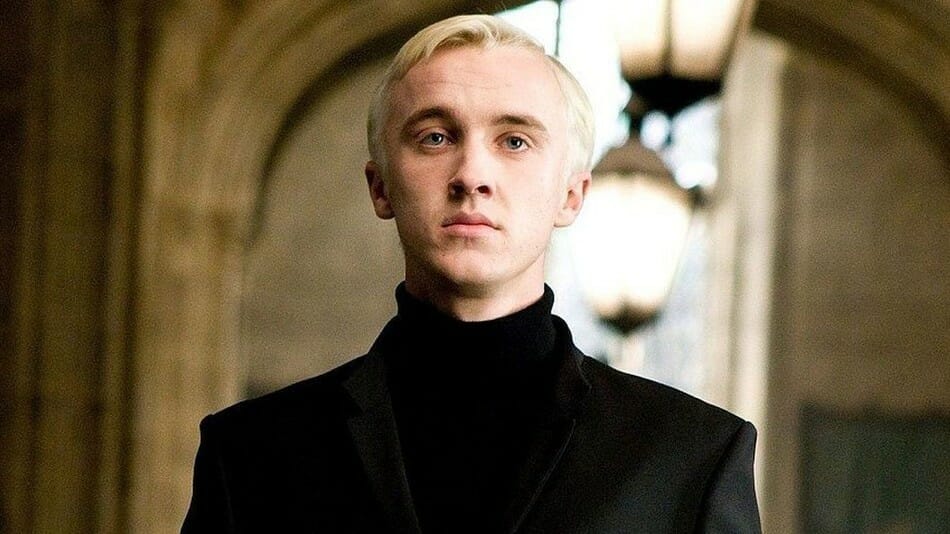
11) Draco is related to Sirius, Tonks, Ron, and Neville—and maybe Harry
The Wizarding World’s “Sacred Twenty-Eight,” the list of names that identified 28 pure-blood families released in the 1930s, was designed to help “such families maintain the purity of their bloodlines.” It’s not an entirely accurate list—the Potters didn’t make the cut due to their surname being common among Muggles—and some families, such as the Weasleys, resented being on the list.
But for others, it indicated which families were worth associating with or intermarrying with. You don’t have to go back very far to discover that many of the characters we met throughout Harry Potter are directly (or distantly) related to one another.
That’s very much the case for Draco, and although our viewpoint on the Malfoy side is fairly limited, we have a far better idea of how wide that spans through Draco’s mother Narcissa, who’s a member of “The Noble and Most Ancient House of Black.” Nymphadora Tonks is Draco’s first cousin through her mother (and his aunt) Andromeda, Narcissa’s older sister. Narcissa, Andromeda, and Bellatrix were first cousins to Sirius Black, so that would make Sirius Draco’s first cousin once removed. Teddy Lupin, who was born in Deathly Hallows to Tonks and Remus Lupin, would be Draco’s first cousin once removed, while Delphini from Cursed Child would be his first cousin through his aunt Bellatrix.
Once you expand the family tree it gets trickier (and more distant) to track those family ties. According to Sirius in Order of the Phoenix, Arthur Weasley was “something like [his] second cousin once removed” and Molly Weasley a “cousin by marriage,” which would make Draco a very distant relative of the Weasleys.
Many of the names on the Black family tree are from the Order of the Phoenix movie, so we can treat it as canon unless there’s book information (or information from Rowling) to suggest otherwise. For instance, Neville Longbottom may have distant ties to the Blacks (and Draco) through Callidora Black. However, the sole Potter on the chart—Charlus Potter—might not be directly tied to Harry. The timeline (and the birth and death years for Charlus’ wife Dorea Black) suggested that they might be Harry’s paternal grandparents, but Rowling retconned that potential piece of canon after providing the actual names of Harry’s grandparents: Fleamont and Euphemia Potter. (Harry’s great-grandfather was named Henry.)
If you go back far enough chances are a Malfoy could’ve married a Potter at some point. We just don’t know yet.
12) Draco developed an interesting adult hobby
What does an ex-Death Eater do after graduating Hogwarts? Turns out that Draco didn’t really have to worry about it. Although he admitted to a much older Harry that he would’ve wanted to become a professional Quidditch player—the career path eventually taken up by Ginny Weasley—Rowling doesn’t believe he would’ve needed to take up a job due to the Malfoy family’s wealth.
What he did instead, according to Rowling, was develop an interest in alchemy, but he was never tempted to use the information he found to make a Sorcerer’s Stone (Philosopher’s Stone in the U.K.)
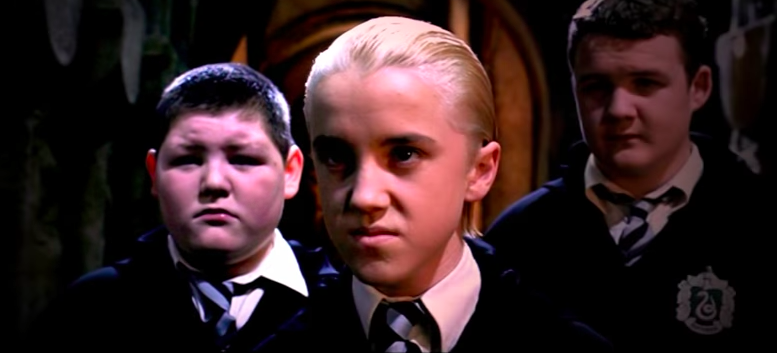
13) A Portuguese notebook reportedly revealed Draco’s middle name
Many middle names in the Wizarding World follow a pattern. For some, it may be their mother or father’s name (e.g., William Arthur Weasley, Harry James Potter, Ginevra Molly Weasley). For others, it may come from a beloved or respected relative or friend. (See: Ronald Bilius Weasley, all of the Potter children.) With Draco, it’s the former.
The Portuguese publishing house Editorial Presença released a notebook to accompany the release of Half-Blood Prince, and one page revealed Draco’s middle name. Like Harry, that names takes its cue from his father—making his full name Draco Lucius Malfoy.
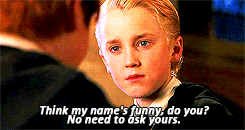
Just try not to laugh when he introduces himself.
14) Draco is one of the younger students in his year at Hogwarts
For most wizards and witches, that catch-all age that determines what they can and can’t legally do is 17. At 17, they can perform magic outside of Hogwarts, apparate (a transportation method that allows one to travel from one place to another almost instantly), and are generally considered adults. Depending on when their birthday falls on the calendar, this occurs either during or after their sixth year at Hogwarts.
Apart from the requirement that wizards be of age for the Triwizard Tournament in Goblet of Fire, the age difference wasn’t much of a factor for Harry and company until Half-Blood Prince. When the first test date for the Apparition Test—which wizards and witches needed to pass go receive a license to apparate—arrived on April 21, Ron and Hermione were old enough to take the test, but Harry was not, so he had to remain behind at Hogwarts.
Based on the attendance of Professor Slughorn’s class that day, he wasn’t the only one. Two other students stayed behind: Ernie Macmillan, a Hufflepuff in Harry’s year, and Draco, whose birthday falls on June 5, 1980. Though Draco’s birthday had been previously revealed on Rowling’s website, the exclusion of Draco from taking the Apparition Test made it official.
Because we’re only shown one class, it’s unclear just how many other students weren’t able to take the Apparition Test that day. For example, Neville Longbottom’s birthday falls on July 30, 1980 (just one day before Harry’s) but wasn’t in the class because he didn’t qualify to advance to N.E.W.T.-level Potions.
15) Draco Malfoy was proficient at one skill Harry could never master
In his third year, Harry conjured a corporeal Patronus, something that wizards and witches—including Hermione—struggled with as adults. But he failed abysmally in other areas of magic, including Snape’s attempts to teach him to close his mind from Voldemort with Occlumency. Draco, on the other hand, couldn’t exactly conjure a Patronus but picked up the ability to block people out of his own mind.
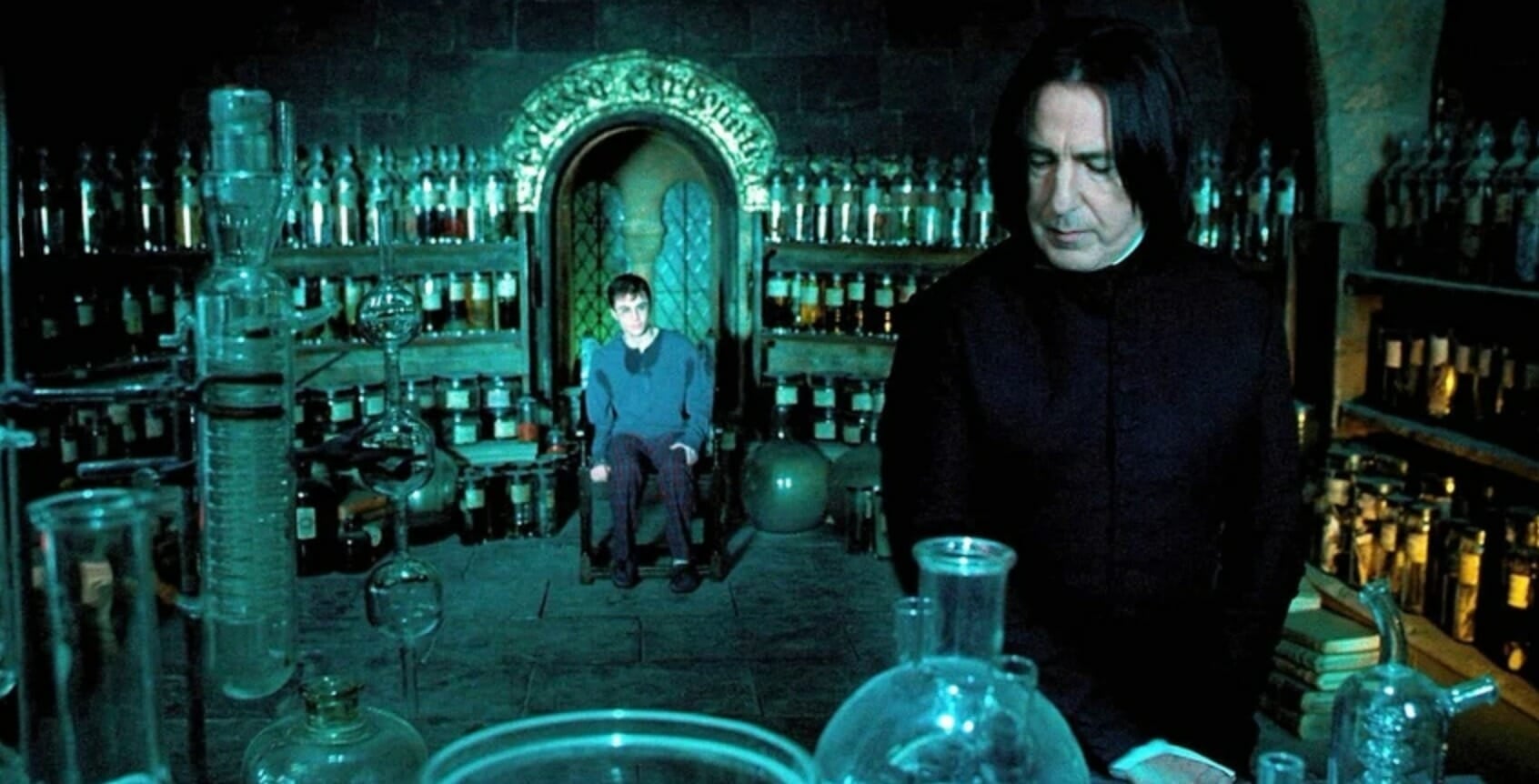
He might not have had to worry about being connected to Voldemort, but he was able to block Snape out during Half-Blood Prince, something that Snape believed Draco learned from Bellatrix Lestrange. After Snape picked up on Draco using Occlumency, Draco told Snape (in a conversation overheard by Harry) that he learned it to keep Snape from “butting in” on his plans to murder Albus Dumbledore.
Although some people, such as Rowling’s U.K. editor, thought it didn’t make sense for Draco to excel at Occlumency while Harry failed at it, Rowling believed it made perfect sense.
“I argued that it was perfectly consistent with Draco’s character that he would find it easy to shut down emotion, to compartmentalise, and to deny essential parts of himself,” Rowling wrote on Pottermore. “Dumbledore tells Harry, at the end of Order of the Phoenix, that it is an essential part of his humanity that he can feel such pain; with Draco, I was attempting to show that the denial of pain and the suppression of inner conflict can only lead to a damaged person (who is much more likely to inflict damage on other people).”
Editor’s note: This article is regularly updated for relevance.

